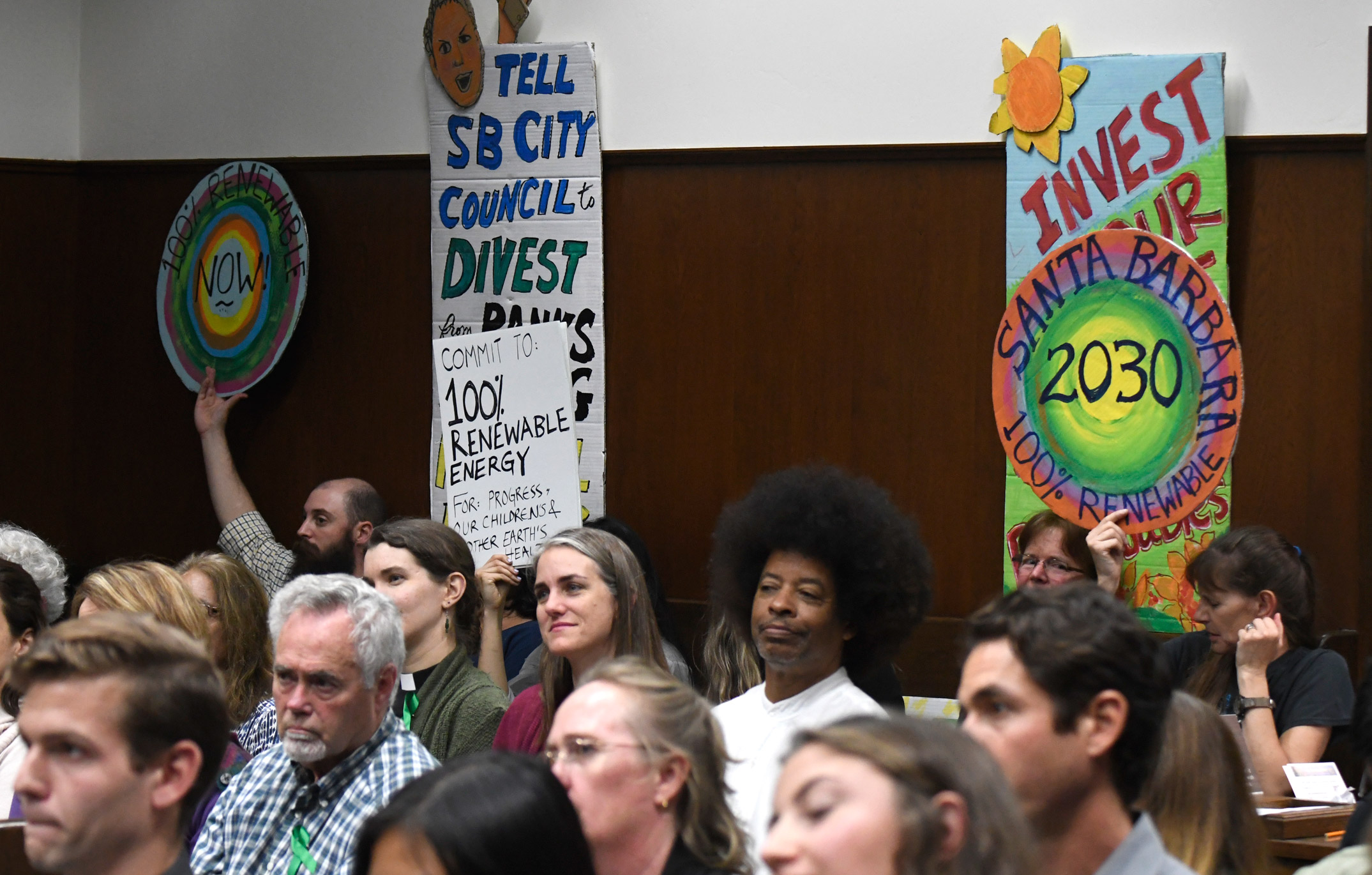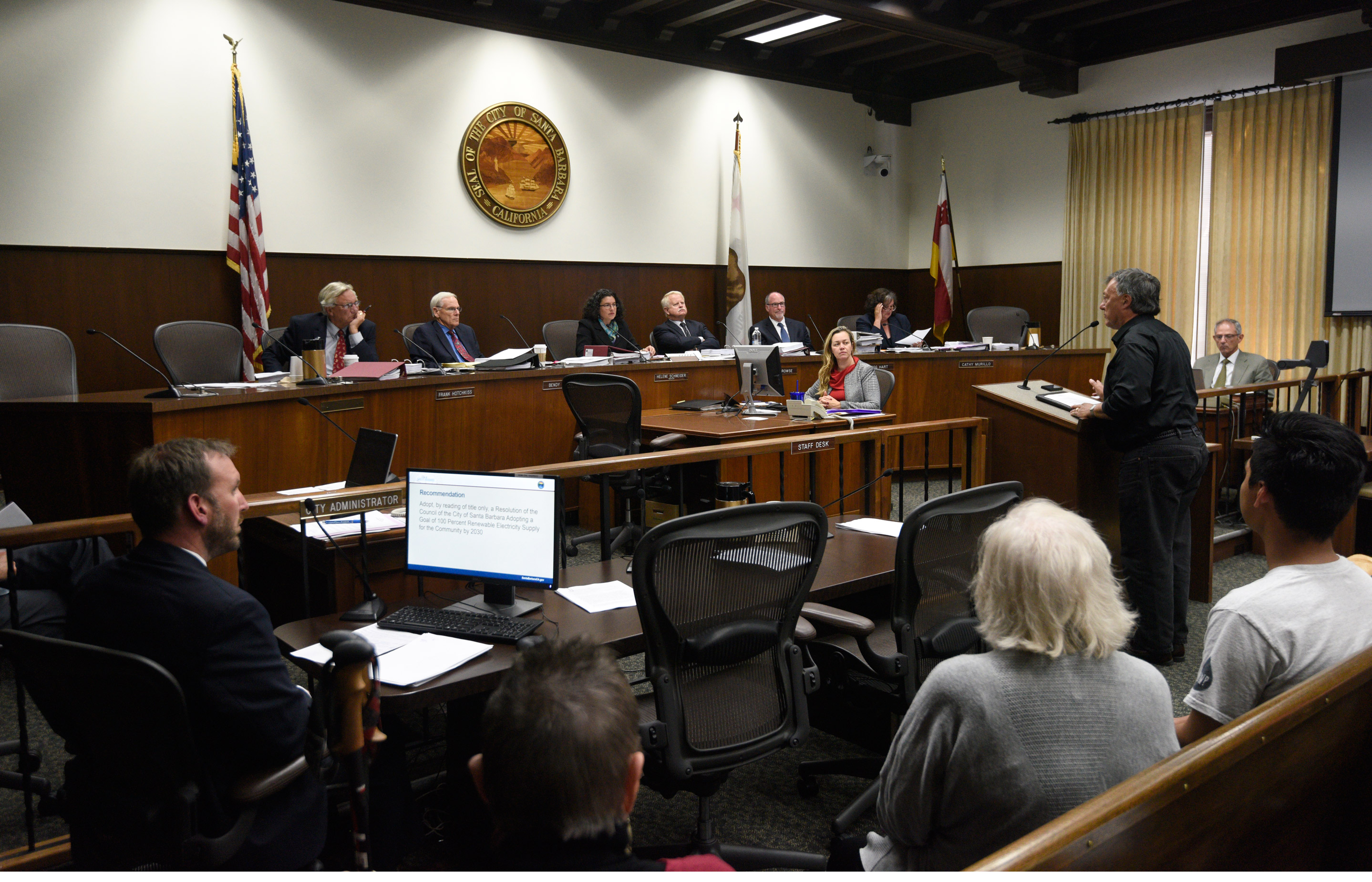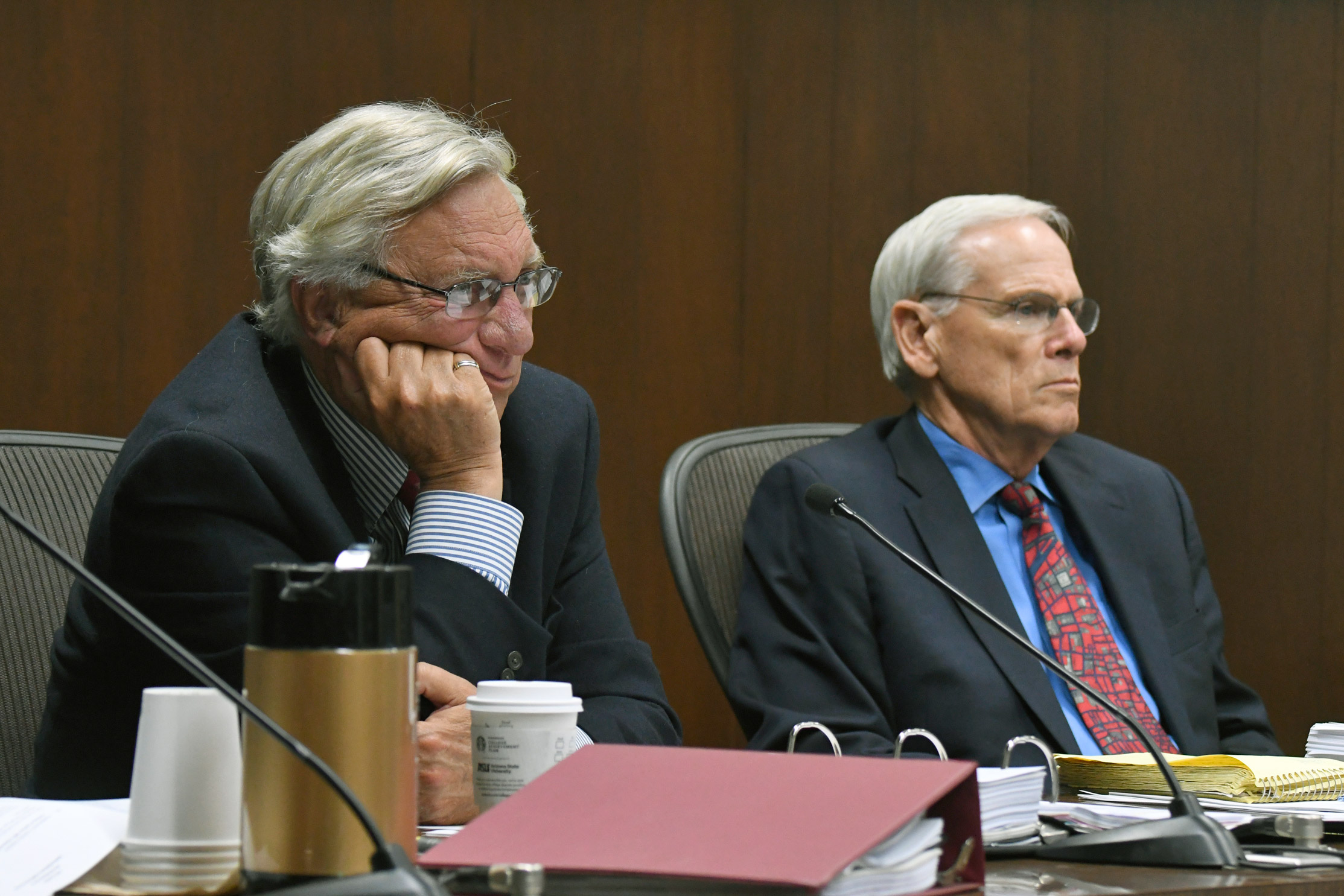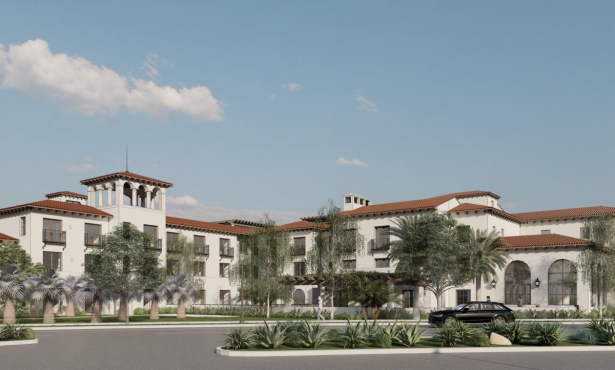Santa Barbara Votes for 100 Percent Renewable Energy
The Goal Is to Go Completely Clean by 2030

On the heels of President Donald Trump’s decision to break from the Paris climate accord, Santa Barbara on Tuesday became the 30th U.S. city — and the first on the Central Coast — to commit to using 100 percent renewable energy in the very near future.
In a 5-1 vote, with councilmember and mayoral candidate Frank Hotchkiss the lone dissenter, the City Council approved a measure to make the full changeover by 2030. Right now, approximately 28 percent of the electricity provided to the city at large is deemed renewable. The decision drew hearty applause from a crowd of longtime environmentalists, student activists, and everyday citizens so large that police had to close the council chambers, funnel people into an overflow room, and, when that was full, direct them to the balcony.
Statements leading up to the vote were both impassioned and pragmatic. UCSB undergraduates lamented the existential threat of climate change, and conservation leaders talked about the practicalities of such an ambitious and challenging undertaking. But everyone voiced confidence in Santa Barbara’s ability to realize its goal. “So it is time to get to work,” said Mayor Helene Schneider.

Before Tuesday’s vote, Schneider called Trump’s withdrawal from the Paris climate accord “ridiculous and short-sighted.” She joined with mayors from Alameda, California, to Ypsilanti, Michigan — and 209 cities alphabetically in between — to announce their solidarity with the aims of the historical climate agreement to keep global warming below 1.5 degrees Celsius. “The world cannot wait — and neither will we,” wrote the Climate Mayors, who collectively represent 54 million Americans.
How exactly Santa Barbara will reach its 100 percent clean-energy target has yet to be determined, but City Hall is exploring a menu of options and has already initiated a number of projects to start moving in that direction and to help offset increased demand from the city’s new energy-intensive desalination plant. This past year, the city targeted its big power wasters, reducing overall electricity use by 2 percent and increasing electricity production at El Estero’s cogeneration plant, Lauro Reservoir’s mini hydroelectric facility, and among solar arrays. A new HVAC system at the Police Department eliminated the natural gas used by the old boiler, the airport will be installing a 900-kilowatt solar system, and all streetlights are set to be converted to LED.
Looking ahead, explained city assistant manager Matt Fore, Santa Barbara could develop its own renewable sources or voluntarily pay for clean energy through Southern California Edison. It could also purchase renewable energy credits from providers outside the region. California state mandates may help move the needle, and the results of an upcoming study will reveal whether a proposed Community Choice Energy program is a financially feasible option for Santa Barbara, Fore said.
Former mayor and current mayoral candidate Hal Conklin, who codirected the Community Environmental Council (CEC) before working for Southern California Edison for many years, warned against relying on energy credits or on Community Choice — the former would produce fossil-free energy elsewhere while the latter doesn’t guarantee Santa Barbara would actually receive renewable supplies. “No matter what you do,” Conklin told the council, “you don’t get to decide what energy comes into your city. Sacramento controls that.” The only way to ensure clean energy is pumped through the city’s buildings is to generate it here, he said.
That sentiment was echoed by World Business Academy President Rinaldo Brutoco, whose organization has long advocated for the creation of a South Coast microgrid to both clean up the region’s energy portfolio and insulate it from crippling blackout should its single connection to the Edison grid be severed in a fire or earthquake. “We’re at the end of the line here,” agreed Santa Barbara Chamber of Commerce CEO Ken Oplinger. From a basic business perspective and to better protect commerce from the outages that have recently plagued the area, he said, it makes sense for Santa Barbara to generate its own power.

Easier said than done, said Councilmember Randy Rowse, who voted in favor of the resolution but with a few words of caution. The challenge, he said, will be to figure out how to produce a meaningful amount of energy within Santa Barbara’s relatively small footprint bounded by the mountains and ocean. “And I don’t want to see solar panels on every red-tile roof in town,” he said. “We have an aesthetic to preserve.” Still, Rowse went on, it’s a worthy goal to go after.
Hotchkiss wasn’t swayed by Tuesday’s public outpouring or the determination of his colleagues. He said he worried about renewable sources increasing rates. “There are people out there that rely on trying to keep costs down,” he said. “Whether it’s taxes, gas, or whatever. Those folks absolutely have to be represented, and I plan to do it.” His comments drew vocal rebuttals from the crowd, some of whom were frustrated by him appearing to read on his phone during portions of the public comment period. “Now is the time, Frank, for you and everybody to pay attention to our environment,” said Jordan benShea, vice president of the CEC’s board of directors. “We have the environment, the money, and the passion to be leaders.”
After the hearing, Katie Davis, chair of the Sierra Club’s Santa Barbara group — who, along with the CEC, was instrumental in shepherding the resolution through City Hall — emphasized that renewable energy costs have decreased dramatically in recent years and are now economically competitive with fossil fuels. And, she said, Santa Barbara County already has eight times more jobs in clean energy and energy efficiency than in the oil industry.
With resolutions like Tuesday’s, summed up CEC cofounder Paul Rellis, “We are going to watch the age of fossil fuel recede in the rearview mirror. This is how it begins. This is how it happens.”



